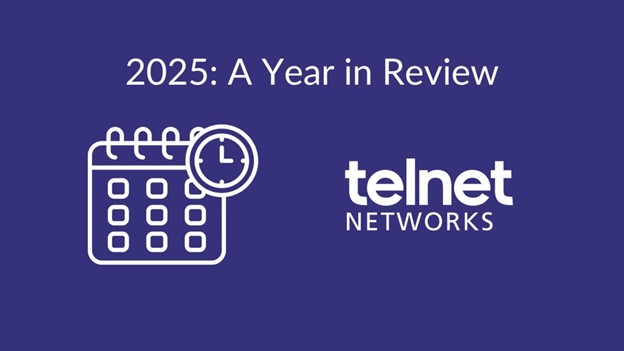Accurate network time synchronization is essential for keeping systems aligned, ensuring smooth operations, and preventing costly errors. Here’s what you need to know:
- Protocols: Use Network Time Protocol (NTP) for millisecond-level accuracy or Precision Time Protocol (PTP) for nanosecond precision.
- Applications: Financial trading, 5G, IoT, and security systems rely on precise timing to function effectively.
- Key Tools: GPS time servers, atomic clocks, and PTP-enabled hardware ensure reliable synchronization.
- Setup Tips: Deploy multiple NTP servers, configure time zones using UTC, and maintain redundancy to avoid failures.
- Security: Protect against threats like GPS spoofing and NTP attacks by using encryption and multi-source verification.
- Maintenance: Regular monitoring, updates, and audits are crucial for long-term accuracy.
Quick Comparison: NTP vs. PTP
| Feature | NTP | PTP |
|---|---|---|
| Accuracy | Millisecond range | Nanosecond range |
| Hardware Needs | Standard equipment | Specialized hardware |
| Cost | Lower | Higher |
| Use Cases | General IT systems | Financial trading, IoT |
This guide covers everything from the basics of time synchronization to advanced tools, setup, and security measures to ensure your systems stay accurate and reliable.
NTP vs PTP: Which is the Best Time Sync Protocol
Time Synchronization Core Concepts
This section explains the key mechanisms that ensure accurate time synchronization across networks.
How Network Time Protocol (NTP) Works
NTP keeps clocks synchronized by exchanging time-request packets between clients and servers. It calculates network delays and offsets to adjust local clocks accordingly. Using a client-server model, NTP is designed for precise timekeeping and periodically updates clocks to maintain accuracy.
Understanding the Time Source Hierarchy
NTP uses a stratum-based hierarchy to distribute time reliably and avoid timing loops. This structure is critical for stable network operations:
| Stratum Level | Description | Common Sources |
|---|---|---|
| Stratum 0 | Primary Reference | Atomic clocks, GPS |
| Stratum 1 | Primary Servers | Directly linked to Stratum 0 sources |
| Stratum 2 | Secondary Servers | Connected to Stratum 1 servers |
| Stratum 3+ | Client Devices | Endpoints within the network |
This layered system ensures consistent time distribution across networks, especially in enterprise environments.
Using UTC and Managing Time Zones
For global consistency, enterprise networks should rely on UTC as the central time source. Local time zone conversions and daylight saving adjustments can then be handled at the host level. This method ensures uniform timestamps across distributed systems.
Network delays and irregular routing paths can impact synchronization accuracy. To counter this, advanced algorithms filter out unreliable time data, ensuring precise synchronization throughout the network.
With these principles in mind, the next step is to examine the hardware and tools that enable effective time synchronization.
Time Sync Hardware and Tools
Modern network time synchronization depends on advanced hardware and protocols to ensure precise timing across systems. Here’s a closer look at the key components that keep enterprise networks in sync.
GPS and Atomic Clock Systems
GPS-based time servers achieve extremely accurate timing by integrating advanced technologies. These systems often combine several components for enhanced reliability:
| Component | Purpose | Accuracy Level |
|---|---|---|
| GNSS Receivers | Source of time from satellites | Nanosecond range |
| Rubidium Atomic Clocks | Backup for GPS signal interruptions | Sub-microsecond |
| Anti-jamming Technology | Protection against signal interference | Continuous operation |
Atomic clocks serve as a reliable backup, maintaining sub-microsecond accuracy when GPS signals are unavailable. This redundancy is critical for operations that demand uninterrupted precision timing.
Precision Time Protocol Systems
PTP (Precision Time Protocol) enables nanosecond to picosecond accuracy by using hardware timestamping and a master-slave setup. This makes it an excellent choice for applications like high-frequency trading and real-time IoT systems. Its precision is crucial for meeting the needs of financial institutions, 5G networks, and IoT environments.
Key aspects of PTP include:
- Hardware-based timestamping for precise time measurement
- Master-slave architecture to maintain synchronization
- Reduced latency across connected devices
When choosing time synchronization tools, organizations should focus on:
- The level of accuracy required
- Redundancy to handle failures
- Security features to protect against threats
Regular monitoring and updates are crucial to avoid timing errors that could disrupt operations. These tools not only minimize latency but also enhance system reliability across distributed networks.
With the right hardware and protocols in place, the next step is to establish and maintain a robust time synchronization system.
Setting Up Time Synchronization
Getting network time synchronization right involves careful planning and precise steps to ensure everything runs smoothly. Here’s a breakdown of the key components and steps you need to follow.
Choosing Time Synchronization Equipment
The equipment you choose depends on your organization’s specific needs. Here’s a quick comparison to help you decide:
| Requirement | NTP Solution | PTP Solution |
|---|---|---|
| Accuracy Level | Millisecond range | Nanosecond range |
| Hardware Needs | Standard network equipment | Specialized PTP-capable hardware |
| Implementation Cost | Lower, uses existing infrastructure | Higher, requires dedicated hardware |
| Typical Applications | General enterprise timing | High-frequency trading, telecom |
For most enterprise setups, it’s wise to use at least four NTP servers. This prevents the "two-clock problem", where discrepancies between just two clocks can lead to errors. Using three servers is better, but if one fails, redundancy is lost, which can bring back this issue.
Once you’ve chosen the right equipment, the next step is configuring your network for time synchronization.
NTP and PTP Configuration Steps
Steps for NTP Setup:
- Server Configuration
- Install NTP software.
- Set up administrator access.
- Configure firewall rules.
- Network Configuration
- Define the primary time source.
- Build a server hierarchy.
- Adjust settings for Windows time services, if applicable.
- Client Setup
- Deploy configurations to clients.
- Check connections to the time source.
- Test synchronization accuracy.
Steps for PTP Setup:
PTP setup is more specialized. It involves installing PTP-capable hardware, setting up the Best Master Clock Algorithm (BMCA), and enabling hardware timestamping for precise synchronization.
Maintenance Tips for Long-Term Accuracy
Regular upkeep is essential to keep your system accurate and reliable. Here’s what to focus on:
| Task | Frequency | Purpose |
|---|---|---|
| Continuous Monitoring | Daily | Check GPS reception, timing accuracy, and network latency. |
| Software Updates | Monthly | Apply security patches and protocol improvements. |
| System Audits | Quarterly | Ensure compliance with industry standards. |
To keep everything running smoothly:
- Use redundant time sources for backup.
- Document any configuration changes.
- Keep firmware and software up to date.
- Regularly test failover systems.
Maintaining your system not only ensures accurate synchronization but also helps avoid disruptions in critical areas like financial transactions or compliance checks. Proper setup and regular maintenance are key to achieving precision and reliability.
sbb-itb-f59d864
Network Performance and Time Sync
Accurate time synchronization plays a key role in maintaining network performance. It impacts operations directly and helps in identifying and resolving issues effectively.
Latency and Accuracy Improvements
Precise synchronization reduces latency and ensures accurate data processing – essential for industries like financial trading, 5G networks, and industrial automation. Each of these fields demands different levels of timing precision:
| Application Type | Required Accuracy | Impact on Operations |
|---|---|---|
| Financial Trading | Nanoseconds | Ensures correct transaction order and compliance |
| 5G Networks | < 1 microsecond | Supports network timing and smooth handoffs |
| Industrial Control | Milliseconds | Facilitates process automation and event tracking |
Although synchronization enhances accuracy and lowers latency, certain challenges can interfere with its effectiveness.
Common Time Sync Problems
While proper configuration and maintenance address many synchronization issues, some challenges need targeted solutions:
| Problem | Solution |
|---|---|
| Uneven Network Paths | Apply route symmetry controls |
| GPS Signal Issues | Use redundant GNSS sources |
| Network Congestion | Set up a dedicated timing network |
Time System Monitoring
Effective monitoring ensures synchronization reliability by tracking:
- Clock offsets between devices
- Delays in network paths
- Synchronization accuracy
- Availability of time sources
"The integration of time synchronization with 5G and IoT technologies requires even more precise timing to support the high-speed and low-latency requirements of these networks".
Automated alerts help detect deviations, failures, or hardware issues early, ensuring smooth operation. As 5G and IoT systems demand ultra-precise timing, monitoring tools must evolve to meet these high-speed, low-latency requirements.
Regular audits also ensure compliance with industry standards and maintain peak performance. Tools like NTP monitoring software can pinpoint synchronization problems before they disrupt critical operations.
Time Sync Security
Improving network performance through synchronization is important, but keeping time systems secure is just as critical. Cyber threats targeting time infrastructure can disrupt operations and compromise network integrity, making protection a top priority.
Time-Based Attack Prevention
Attacks like GPS spoofing, NTP amplification, and delay attacks pose serious risks to network operations. Here’s how they can be mitigated:
| Attack Type | Prevention Measure |
|---|---|
| GPS Signal Spoofing | Use multi-source verification |
| NTP Amplification | Disable the monlist command |
| Delay Attacks | Establish redundant time paths |
Robust strategies are essential. For instance utilizing a dual redundant timing system with separate GPS and terrestrial based time sources to ensure accurate synchronization even during disruptions.
Time Source Security
Protecting time infrastructure involves safeguarding both physical and digital elements. Time servers and distribution equipment should be stored in secure, access-controlled locations with constant monitoring. On the digital side, NTPv4 offers advanced security features like secure key encryption, public key infrastructure, and access control lists. Using multiple independent time sources further reduces the risk of single points of failure and strengthens defenses against attacks.
Industry Standards and Rules
In February 2020, a U.S. presidential directive addressed GPS timing vulnerabilities, requiring organizations to adopt measures against signal interference. Specific timing standards apply to critical industries:
| Industry | Requirement | Standard |
|---|---|---|
| Financial Services | Sub-millisecond accuracy | MiFID II compliance |
| Telecommunications | Microsecond precision | ITU-T G.8271 |
"The integration of time synchronization security with modern network infrastructure requires a comprehensive approach that addresses both physical and cyber threats while maintaining compliance with evolving industry standards".
Regular audits and monitoring are vital for maintaining compliance and system integrity. As synchronization technologies evolve, security measures must keep pace to counter new threats and ensure reliable operations.
Time Sync Technology Updates
Time synchronization is evolving quickly to meet the needs of today’s advanced technologies. As networks grow more intricate and interconnected, precise timing becomes a key factor for ensuring smooth and efficient performance.
5G and IoT Time Requirements
5G networks have brought timing precision to a whole new level. While older networks worked with millisecond accuracy, 5G demands synchronization within just 100 nanoseconds to function reliably. Here’s a quick comparison of timing needs across different network types:
| Network Type | Timing Requirement | Primary Use Cases |
|---|---|---|
| Traditional Networks | Milliseconds | Basic network operations |
| 4G Networks | Microseconds | Mobile data services |
| 5G Networks | 100 nanoseconds | Ultra-reliable communications |
| IoT Networks | Tens of nanoseconds | Sensor coordination |
IoT networks, with their wide range of devices, face unique timing challenges. To address this, solutions that combine PTP (Precision Time Protocol) and NTP (Network Time Protocol) are being used. These hybrid approaches strike a balance between the high accuracy needed and the technical limits of IoT devices. As demands increase, new synchronization technologies are stepping in to tackle these challenges.
New Time Sync Methods
Recent advancements have introduced more advanced ways to manage network timing. Modern systems now use a mix of GNSS (Global Navigation Satellite Systems) and atomic clocks to achieve extremely high levels of accuracy.
Quantum clock technology is another exciting development, offering precision down to the picosecond level. This innovation is opening up new possibilities for industries needing reliable and scalable synchronization.
For example, financial institutions, which are among the first to adopt cutting-edge synchronization methods, rely on PTP-based systems to achieve nanosecond-level accuracy for high-frequency trading.
Today’s synchronization systems also come with improved security features, ensuring both precise timing and dependable network performance. These enhancements are critical for industries where reliability is non-negotiable.
Summary
Main Points Review
Different protocols address varying levels of precision required by enterprise networks. NTP offers millisecond-level accuracy, making it suitable for general business operations, while PTP achieves nanosecond precision, which is critical for industries with highly specialized needs.
For example, NTP works well for typical IT systems, but industries like finance depend on PTP for tasks such as high-frequency trading, where even the smallest delays can have a big impact. The choice between NTP and PTP ultimately depends on the specific accuracy demands of your industry.
Tools and Services
To maintain precise synchronization, enterprises need tools and services designed for their unique requirements. Many modern solutions combine multiple technologies to ensure reliability. Equinix Precision Time is a standout example of a dependable synchronization tool.
Here are some of the key options available:
- GPS Time Servers: Offer direct access to highly accurate time sources while safeguarding against signal interference.
- Network Time Appliances: Provide flexibility by supporting both NTP and PTP capabilities.
- Monitoring Systems: Help ensure synchronization accuracy and quickly identify potential issues.
For businesses needing millisecond-level accuracy in critical operations, providers like Telnet Networks offer specialized hardware and services. Achieving success with these systems requires selecting the right tools for your accuracy needs and ensuring they are properly maintained.
FAQs
How can two devices over a network synchronize their clock times?
Devices on a network typically rely on Network Time Protocol (NTP) to align their clocks. NTP works by compensating for network delays and offsets through client-server communication.
NTP achieves millisecond-level accuracy on local networks and tens-of-milliseconds accuracy over the public Internet. For even greater precision, enterprises may opt for Precision Time Protocol (PTP), which delivers nanosecond-level accuracy. Providers like Telnet Networks offer hardware solutions supporting both NTP and PTP, giving organizations flexibility based on their timing needs.
To improve synchronization, organizations can:
- Use multiple NTP servers for backup
- Maintain consistent time source references
- Regularly monitor synchronization accuracy
Choosing the right protocol depends on how precise the timing needs to be for your network.






